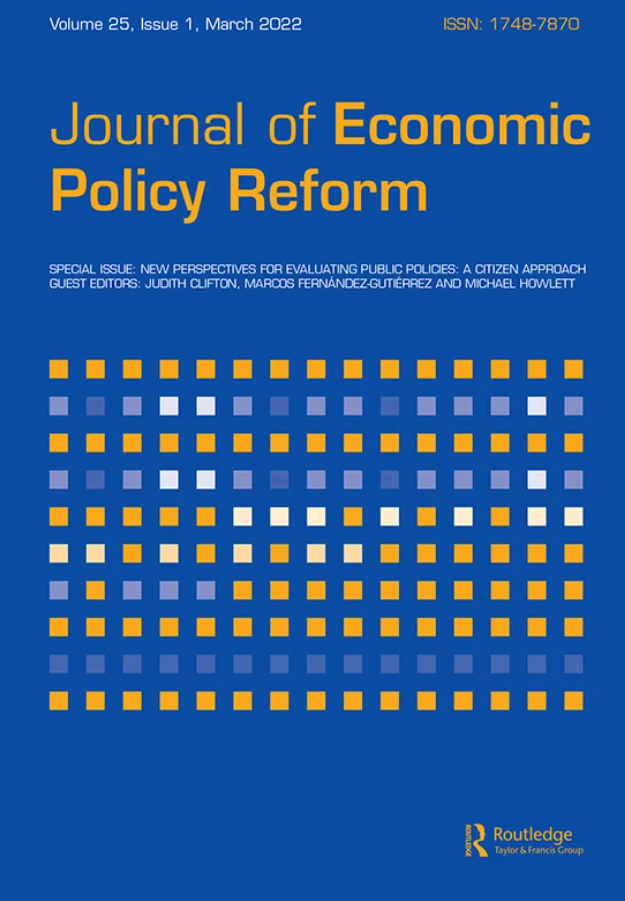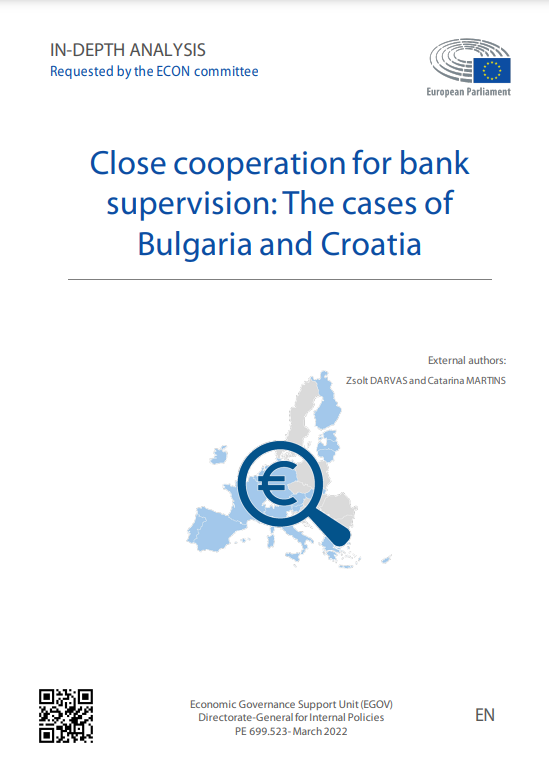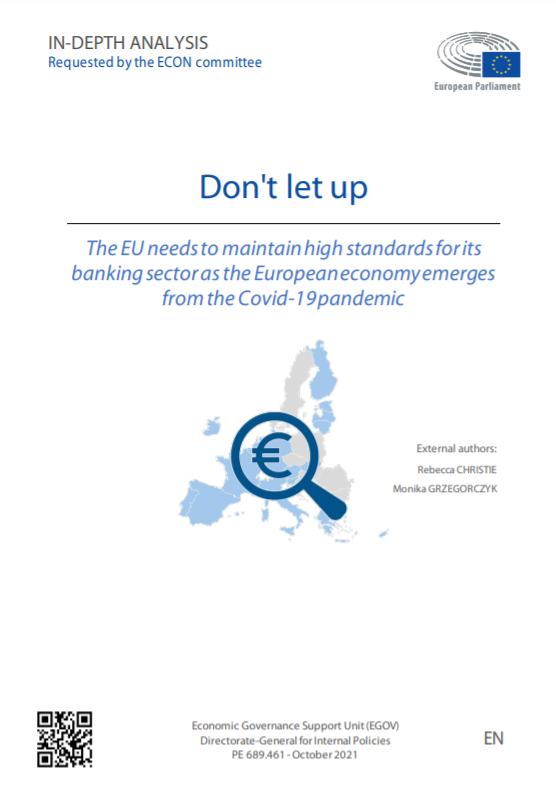Blog Post
Bad News and Good News for the Single Resolution Board
A first report on a key plank of the European Union’s banking union reflects on shortcomings thus far, but also suggests that recent improvements might ultimately lead the SRB to be successful in its critical missions.
The establishment in 2015 of the Single Resolution Board (SRB), a new agency of the European Union, counts as one of the most significant European banking reforms of recent years. The SRB was set up to quickly resolve banks that are failing or likely to fail, as part of a wider effort to break the vicious cycle between banks and sovereigns that nearly destroyed the euro area in 2011-12. A first assessment of this reform came up just before Christmas, when the European Court of Auditors (ECA) released a special report on the SRB. The report was discouraging at one level, citing many shortcomings of the new body. But there are also signs that the situation is improving, and that the SRB is on its way towards fulfilling its assigned mission. For both reasons, this report, which is rich in previously undisclosed information and insight, deserves extensive analysis and debate.
The SRB was created following a decision by Europe’s leaders in December 2012 to create a Single Resolution Mechanism (SRM), whose legislative basis (the SRM Regulation) was enacted in July 2014. The SRB duly started operations in 2015 and assumed full authority for the resolution of the 130-odd largest euro-area banks, including the possibility of forcing losses on their claimants if need be (a tool known as “bail-in”), on January 1st, 2016.
As such, the SRB sits at the intersection of two major related but separate recent European reforms, namely the banking union and the adoption of a bank resolution framework.
As such, the SRB sits at the intersection of two major related but separate recent European reforms, namely the banking union and the adoption of a bank resolution framework. The first is about pooling most instruments and institutions of banking sector policy from the national to the European level in order to break the bank-sovereign vicious circle. The SRB is one of two new organizations created for the banking union, the other being the banking supervisory arm of the European Central Bank (ECB), known as ECB Banking Supervision or the Single Supervisory Mechanism (SSM). The bank resolution framework allows banks that are failing or likely to fail to be “resolved” through an administrative process, in contrast to a court-ordered liquidation whose protracted nature may generate damaging instability. The adoption of this framework by the European Union was largely inspired by the US experience, where similar processes administered by the US Federal Deposit Insurance Corporation (FDIC), including creditor bail-in, were seen to work rather well during the financial turmoil of 2007-09. It is embodied in EU legislation known as the Bank Recovery and Resolution Directive (BRRD), whose discussion predated the banking union (its early phase started in 2009-10) and which was enacted in May 2014. The BRRD resolution framework applies to all EU member states, while the banking union so far only covers euro area countries. Under BRRD, each member state must have established a National Resolution Authority (NRA), which in many but not all cases is hosted by the national central bank. Under the SRM Regulation, the SRB acts as central resolution authority in the euro area, even though NRAs also exist in each euro-area country and play a role in every resolution process.
The ECA report appears to be the first public in-depth assessment of the SRB, in contrast to the SSM about which detailed reports have already been published by, among others and in chronological order, Bruegel, the ECA itself, Transparency International (as part of a broader assessment of the ECB), and the European Commission. From the report, it seems that most if not all of the ECA’s auditing work was completed by mid-2017. As is customary, the report includes a response from the SRB to the ECA’s observations and recommendations, presumably written in the fall of 2017, but not any response of the ECA to that SRB’s response.
The report contains both bad news and good news for the SRB. First, the bad news: it makes for painful reading. Essentially, the ECA demonstrates that the SRB was not ready to fulfil its mandate in its first year and a half of full authority, up to the end of the auditing phase around mid-2017. Resolution planning was not effectively achieved (§83 of the ECA report). Many crucial components of the planning process were not performed (e.g. §55, §56, §60, §63, §64, §65, §67, §68). The division of labor between the SRB and NRAs was left unsettled (§122). The flow of information from the ECB to the SRB was inadequate (§132). The SRB did not have a framework for making its own assessment on whether a bank is failing or likely to fail, a key task it has under BRRD and the SRM Regulation (§141) – this raises specific questions on whether the SRB played its role, for example, in the decision of precautionary recapitalization of Banca Monte dei Paschi di Siena in June-July 2017. There were no simulation exercises (“dry runs”) of resolution action, except an insufficient one (as it did not involve the NRAs) back in 2016 (§129).
It is clear from the ECA report that many of these critical shortcomings were associated with the start-up phase of the SRB, and thus of a temporary nature. Even so, the ECA’s analysis suggests that several deficiencies were avoidable with better planning and prioritization. This is made explicit, for example, in the analysis of hiring bottlenecks (§103) and of unrealistic targets set for the completion of transitional resolution plans (§34) and related recruitments (§114 and §125). The inference that the SRB could have done better is also implied by a comparison between the ECA’s respective reports on the SSM and the SRB. Both were issued about two years after the assumption of authority of the respective organizations (the former came out in November 2016). The report on the SSM, titled “Good start but further improvements needed”, made it clear that ECB Banking Supervision was functional even though far from perfect. The SRB report, titled “Work on a challenging Banking Union task started, but still a long way to go”, is distinctly more parsimonious in its praise, and refrains from declaring its object fit for purpose. Of course, major differences between the two institutions mean their respective assessments cannot be compared directly, including their very different mandates, and the fact that the SSM benefited from the pre-existing operational infrastructure of the ECB (that said, the European Commission was involved in the SRB’s initial build-up).
The revelation of the SRB’s unpreparedness in 2016 and 2017, while perhaps not entirely surprising, sheds fresh light on the early development of the banking union.
The revelation of the SRB’s unpreparedness in 2016 and 2017, while perhaps not entirely surprising, sheds fresh light on the early development of the banking union. Viewed in retrospect, the ECB’s arguable excessive reluctance to declare any bank failing or likely to fail in 2016 and early 2017 may have had something to do with its awareness of the SRB’s situation, and not only to the SSM’s own proclivities towards forbearance (which surely played a role in any case). For example, ECB Banking Supervision has been criticized, including by this author, for having endorsed the ill-fated recapitalization of Banca Popolare di Vicenza and Veneto Banca by Italy’s Atlante fund in early 2016. (In June 2017, both banks were eventually recognized as failing and liquidated, at high public cost as the Italian government decided to reimburse all senior creditors.) Had the SRB been readier, would the ECB’s failure verdict have come earlier on for the two Veneto banks, thus presumably avoiding further losses for a number of stakeholders including the Italian public purse? Such questions arise from reading the ECA report, even though the answer to this one may quite well be negative.
Now for the good news. There are plausible indications of rapid improvements from the sorry state described by the ECA. The SRB’s response does not attempt to dispute the report’s findings and does not denote a siege mentality, which is a good sign. Furthermore, the SRB argues that a number of the problems the ECA identified have been tackled after the end of the auditing phase and are on course to be resolved. For example, the understaffing that plagued the SRB’s early life is gradually being addressed, which total staff up from 35 in March 2015, 101 in end-2015, and 171 in end-2016 (ECA §105) to 306 expected in early 2018 and the target level of 350 later in 2018 (SRB’s response). According to the SRB, the division of responsibilities with NRAs has recently been clarified, and a new memorandum of understanding with the ECB is expected to improve the inter-institutional information flow. Redundant information requests, e.g. on derivative exposures (§93 of the report), have been streamlined.
The ECA report itself is good news. Its candor exemplifies effective accountability mechanisms in the EU institutional framework – even though it was apparently not part of the process of renewal of the SRB Chair’s mandate, which, as it happened, was extended for five years the day before the report was published. It suggests that the institutions of Europe’s banking union have a capacity for learning and improvement. Given the high ambition of the banking union project, and its still very unfinished character, such adaptability is not only welcome but indispensable.
What does all this mean for the SRB itself? Despite all the flaws highlighted by the ECA, it passed its first real operational test in early June 2017 with the orderly resolution of Spain’s Banco Popular. Even leaving aside all the ongoing lawsuits that make it premature to reach final judgment, however, there was a strong element of luck in that case, as the SRB has been commendably honest in acknowledging, since a prior sales process made it possible for a buyer (the Santander group) to declare itself in record time, and there was no need to bail in any senior creditors given the bank’s balance sheet situation. The jury is still out on whether the SRB is properly prepared for its next real-world challenges, whenever these come; time will tell. Its unsparing but constructive audit by the ECA can only help.
Republishing and referencing
Bruegel considers itself a public good and takes no institutional standpoint. Anyone is free to republish and/or quote this post without prior consent. Please provide a full reference, clearly stating Bruegel and the relevant author as the source, and include a prominent hyperlink to the original post.















